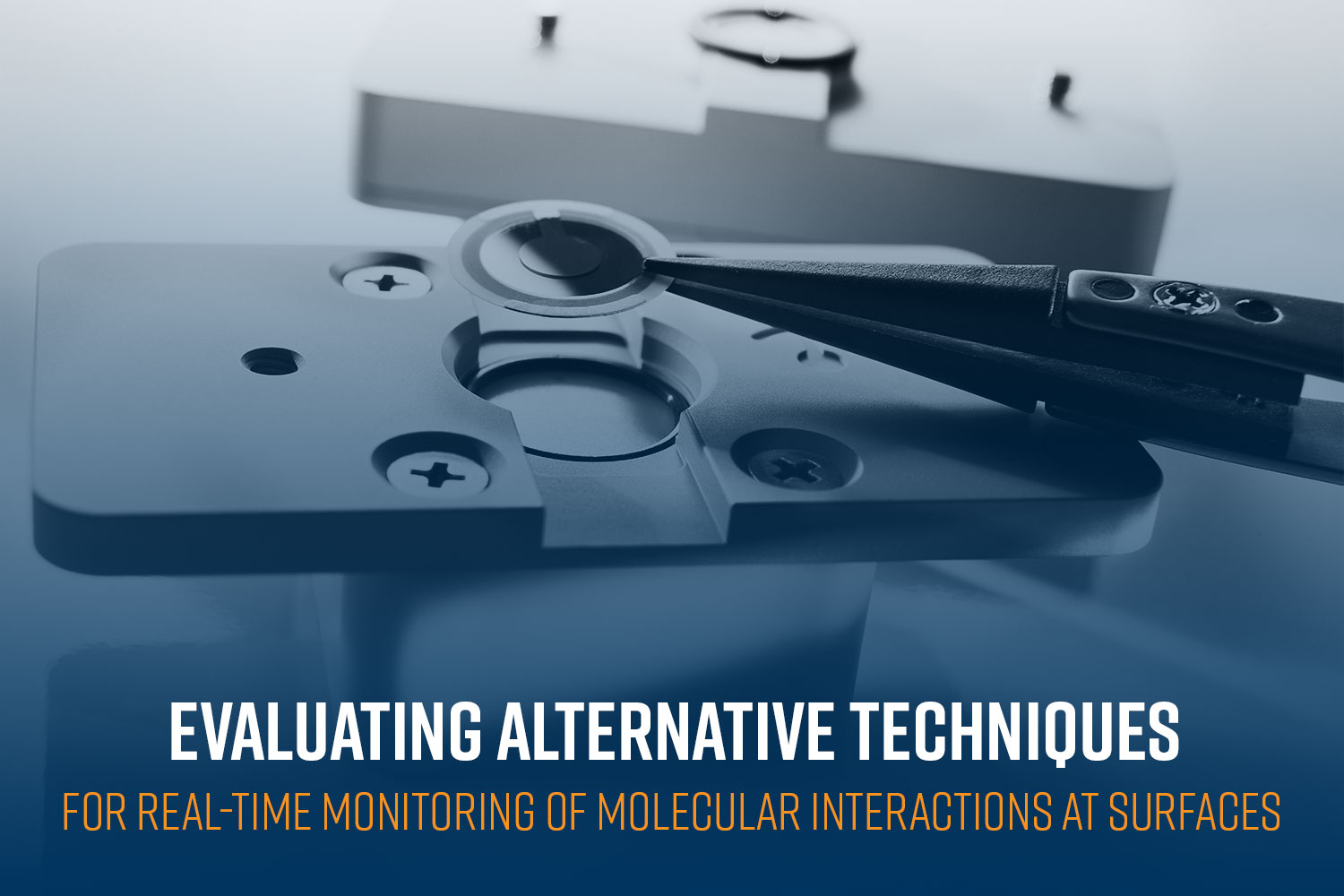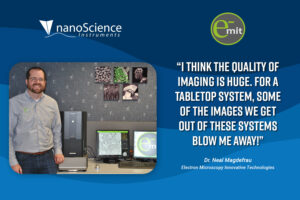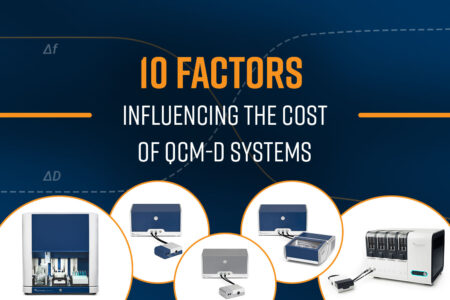Understanding molecular interactions at surfaces is essential for advancing fields such as biosensing, materials science, and drug discovery. These interactions—ranging from protein-ligand binding to polymer adsorption—can reveal crucial information about binding kinetics, affinity, and conformational changes. Surface-sensitive analytical techniques enable researchers to monitor these events in real time and under physiologically relevant conditions, without the need for labeling. By characterizing how molecules behave at interfaces, scientists can design better materials, improve sensor performance, and develop more effective therapeutics.
This blog explores several widely used surface analysis techniques, providing a concise overview of each method along with its key advantages and limitations.

Quartz Crystal Microbalance with Dissipation monitoring (QCM-D)
QCM-D is a highly sensitive acoustic-based analytical technique that is used for studying surface phenomena at the molecular level in real time. QCM-D measures changes in mass and viscoelastic properties of materials on the sensor surface by monitoring changes in the frequency and energy dissipation of a quartz crystal resonator.
The measurement principle of QCM-D is based on the piezoelectric effect of a quartz sensor, where an alternating electrical field applied to the quartz crystal induces mechanical oscillations at its resonant frequency. The resonant frequency of the quartz crystal changes when a mass is added to its surface. This change in frequency (Δf) is proportional to the mass of the added material per unit area (Figure 1). QCM-D also measures the dissipation factor (ΔD), which indicates how the energy is lost during each oscillation cycle. The dissipation factor provides information about the viscoelastic properties of the layer, such as whether it is rigid or soft.
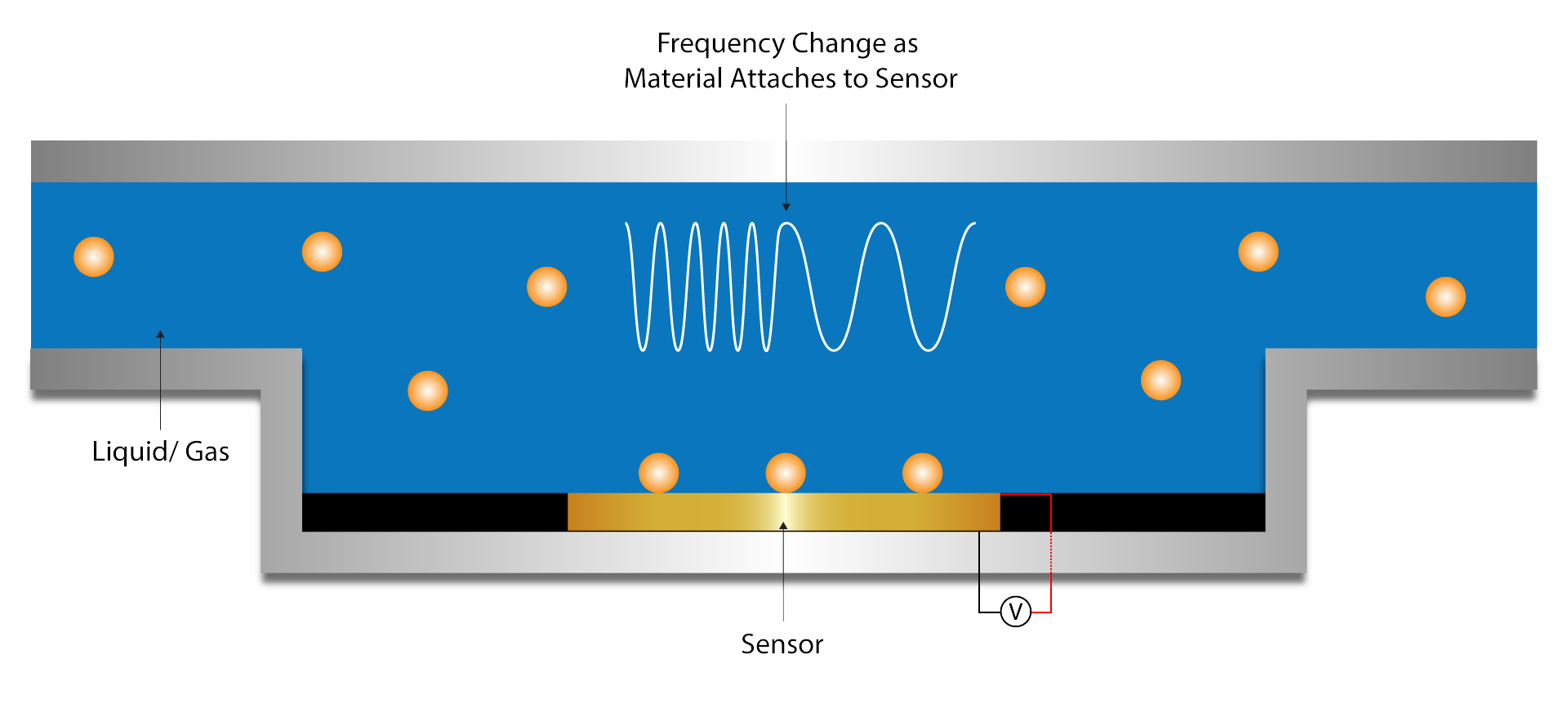
QCM-D is a highly sensitive label-free technique capable of detecting minute changes in total (hydrated) mass down to the sub-nanogram levels in a liquid environment. It provides real-time data on adsorption and desorption processes, allowing for the observation of dynamic changes. QCM-D is applicable to a wide range of materials, including biological molecules, polymers, and small molecules.1
However, as a surface-sensitive technique, QCM-D measurements are affected by changes in the surface properties, such as roughness or inhomogeneities. The technique is most effective for thin films. Data interpretation, particularly for very thick or viscoelastic layers, can be complex and require careful modeling.
Surface Plasmon Resonance (SPR)
SPR is an optical technique widely used to study molecular interactions at surfaces in a label-free and real-time manner.2 SPR measures changes of the surface plasmon resonance angle (ϴ) which is sensitive to the refractive index near a sensor surface (Figure 2). Since SPR is highly sensitive to changes in the refractive index near the sensor surface, this technique is more powerful than QCM-D for detecting low-molecular-weight analytes, providing immediate data on binding events, allowing for the observation of kinetic processes.
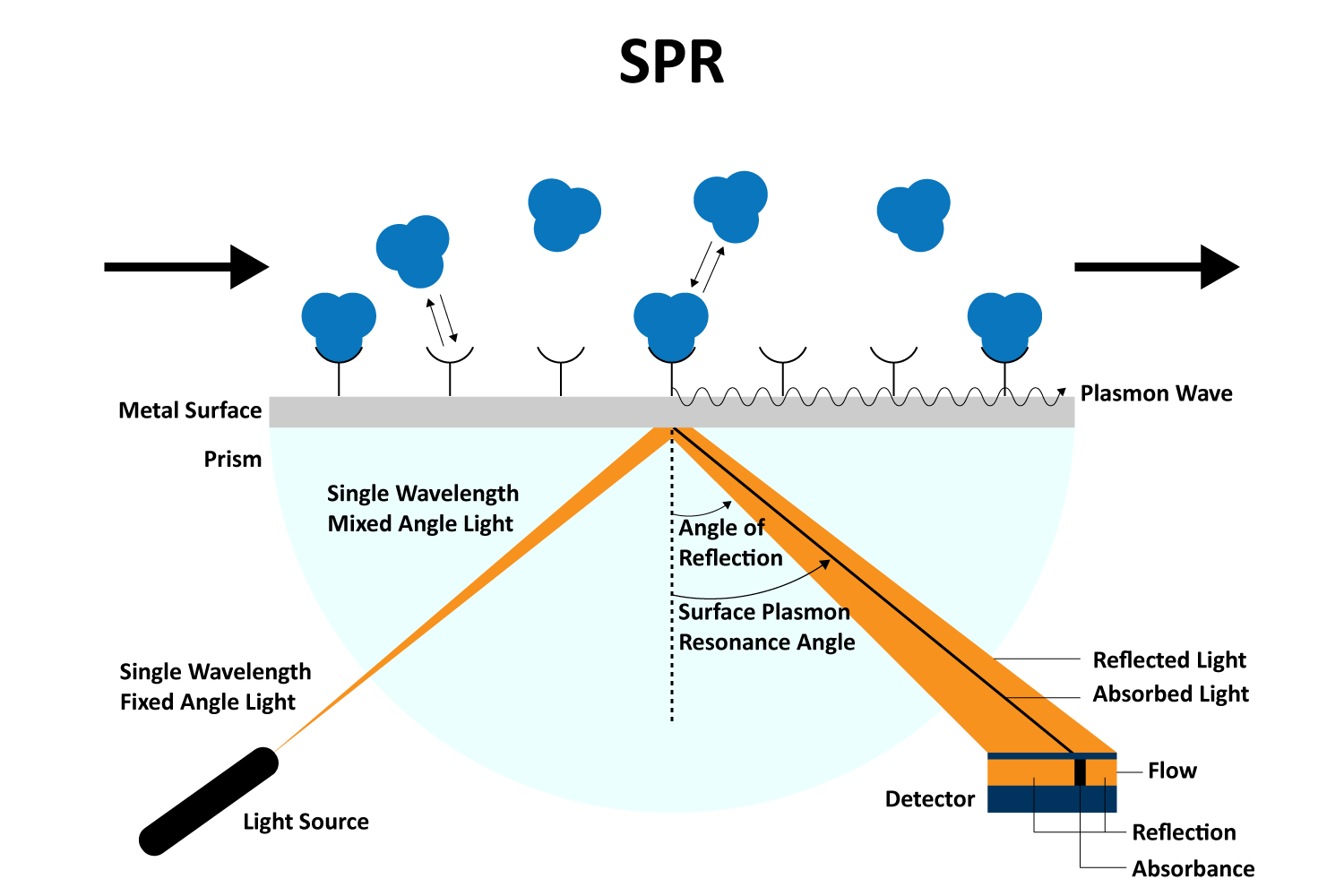
However, SPR’s effectiveness can be limited by thicker films where the changes in refractive index can be difficult to detect. Additionally, unlike QCM-D, SPR does not provide information on viscoelastic properties. SPR also requires the medium to be optically clear, limiting its use in turbid or opaque samples. Another major limitation with SPR is the choice of surface coating, which is restricted to either gold, dextran or biofuntionalized coatings. SPR experiments often require the regeneration of the sensor surface to remove bound analytes for reuse, which can be challenging for certain interactions.
Ellipsometry
Ellipsometry is another surface sensitive technique that is based on optical measurement principles.3 Ellipsometry measures changes in the polarization of light reflected from a sample surface as ellipsometry angle Ψ and Δ. The data is used to characterize the thickness, refractive index, and optical properties of thin films and surfaces (Figure 3). Like SPR, ellipsometry measures the non-hydrated (dry mass) of the adsorbed layer.
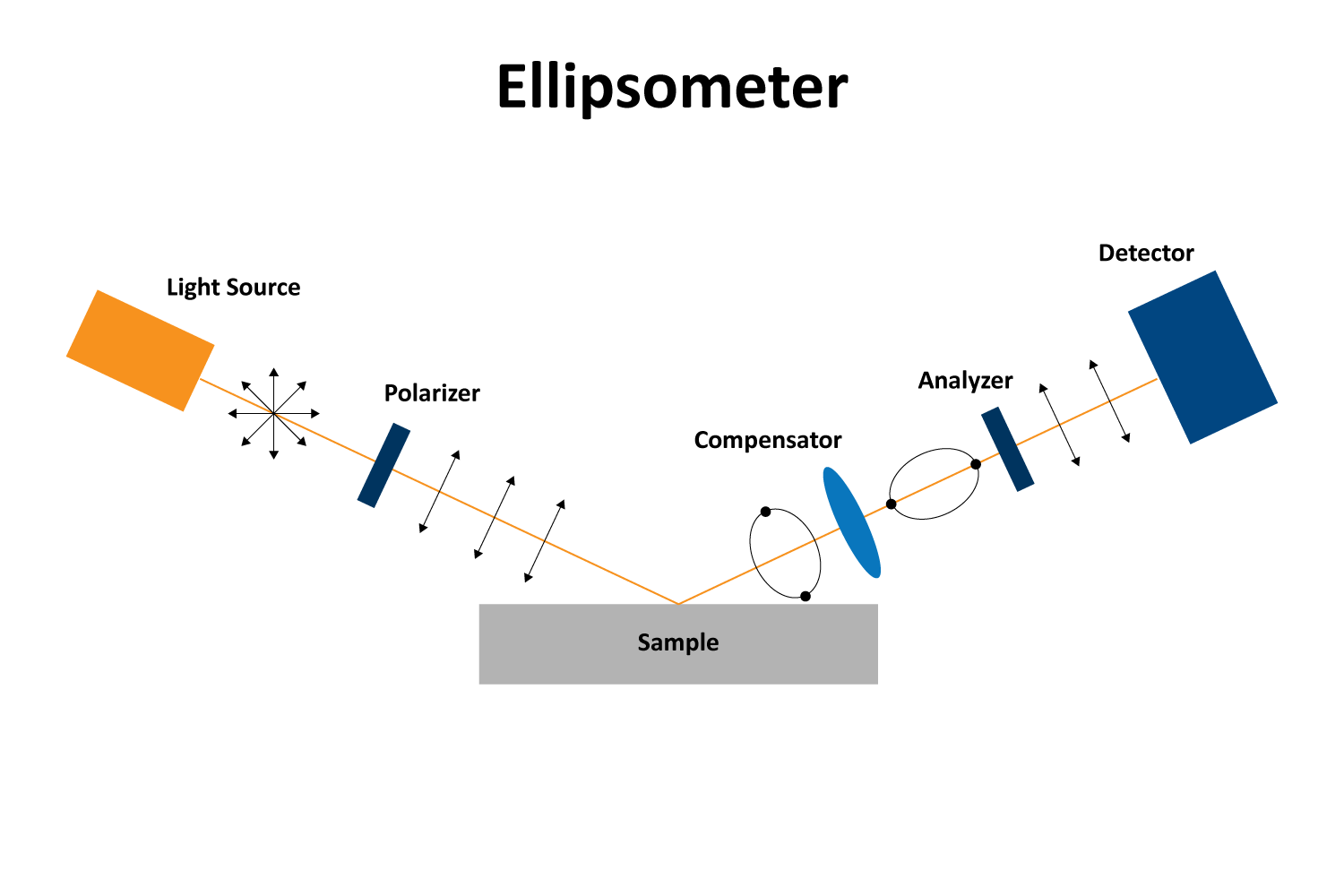
Ellipsometry can analyze a wide range of materials, including metals, semiconductors, dielectrics, and biological materials. It is widely utilized in material science, semiconductor manufacturing, and surface chemistry for non-destructive and highly sensitive analysis of surfaces and thin layers.
However, there are some challenges related to ellipsometry data analysis; the measured ellipsometric angles, Ψ and Δ are not only very sensitive to the adsorbent itself but also to the underlying solid support. Hence, the quantitative characterization of adsorbed biomolecular films requires a good prior knowledge of the substrate optical properties.
Like SPR, Ellipsometry does not provide information about viscoelastic properties. It also requires a smooth and homogeneous surface for analysis; rough or non-uniform surfaces can complicate the analysis. Interpreting ellipsometry data often requires complex modeling and fitting procedures, which can be challenging and may require assumptions about the sample’s properties. In addition, if the material strongly absorbs light, the accuracy of measurements can be limited.
Bio-Layer Interferometry (BLI)
Bio-Layer Interferometry (BLI) is an optical analytical technique used to study molecular interactions in real time. BLI uses interference patterns from light reflecting off a biosensor surface to measure binding events, providing real-time kinetic data. It is a label-free method that measures changes in the thickness of a biological layer on a sensor surface (Figure 4). It allows for the quantitative analysis of binding events, such as protein-protein, protein-DNA, and antibody-antigen interactions.4 BLI systems can be configured for high-throughput screening, enabling the simultaneous analysis of multiple samples or interactions. It can be used with a wide range of biomolecules and in various experimental conditions, including complex biological fluids.
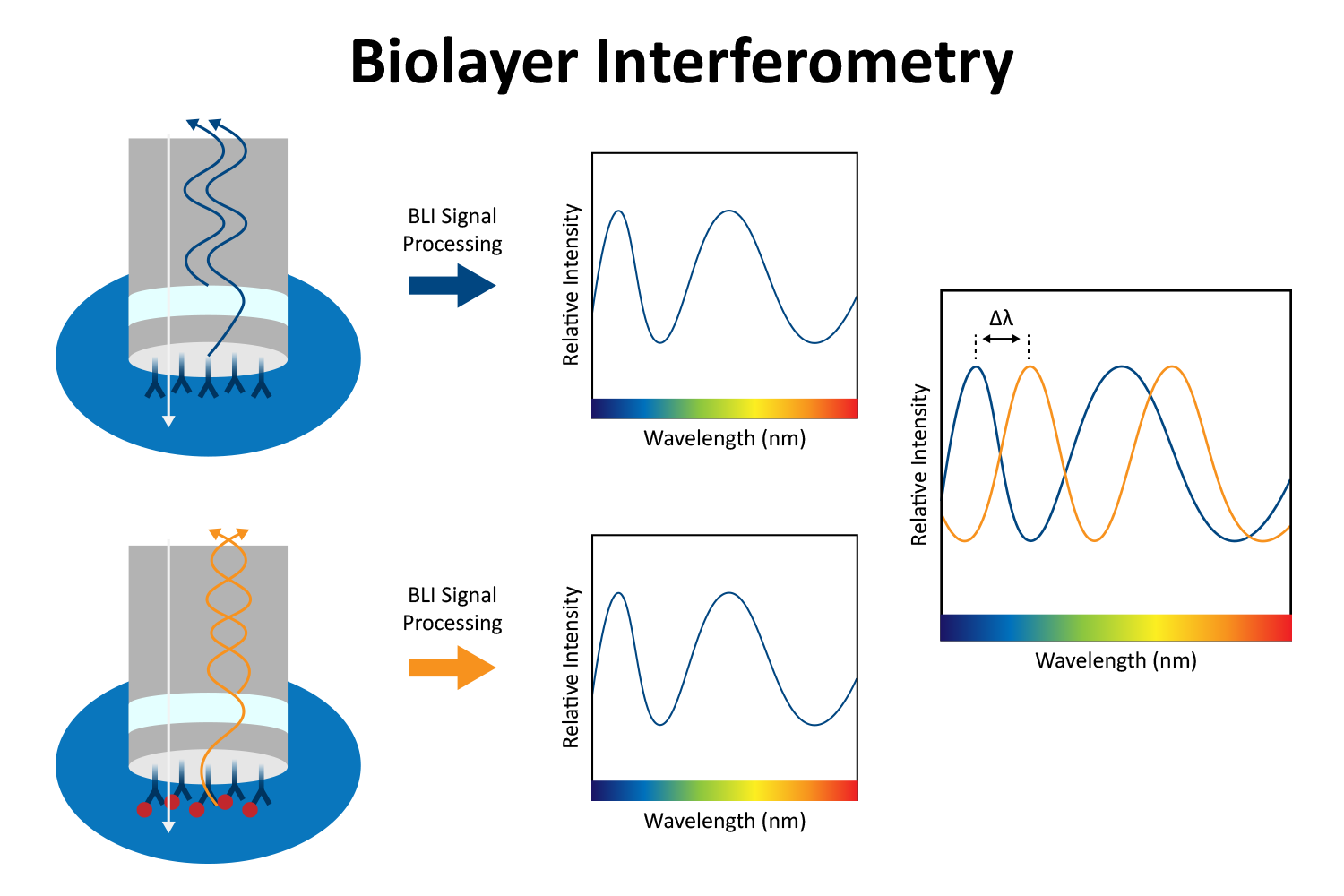
It offers real-time measurements of biomolecular interactions, like SPR, but with easier setup and lower cost. However, BLI may be less sensitive to small molecules or analytes that induce only minor changes in the bio-layer thickness. It is also dependent on the quality and stability of the immobilized layer on the sensor surface. Sensor surfaces may require regeneration between experiments, which can be challenging for certain interactions. In addition, BLI does not measure viscoelastic properties.
Optical Waveguide Light Mode Spectroscopy (OWLS)
OWLS is an optical technique used for studying thin films and surfaces, particularly in the context of biomolecular interactions, material science, and surface chemistry.5 It measures changes in the effective refractive index of a waveguide surface due to adsorbed layers providing information about the thickness, refractive index, and density of adsorbed layers. OWLS involves the propagation of light through an optical waveguide and the monitoring of changes in the light’s behavior due to the presence of a thin film or molecular layer on the waveguide surface as seen in Figure 5.
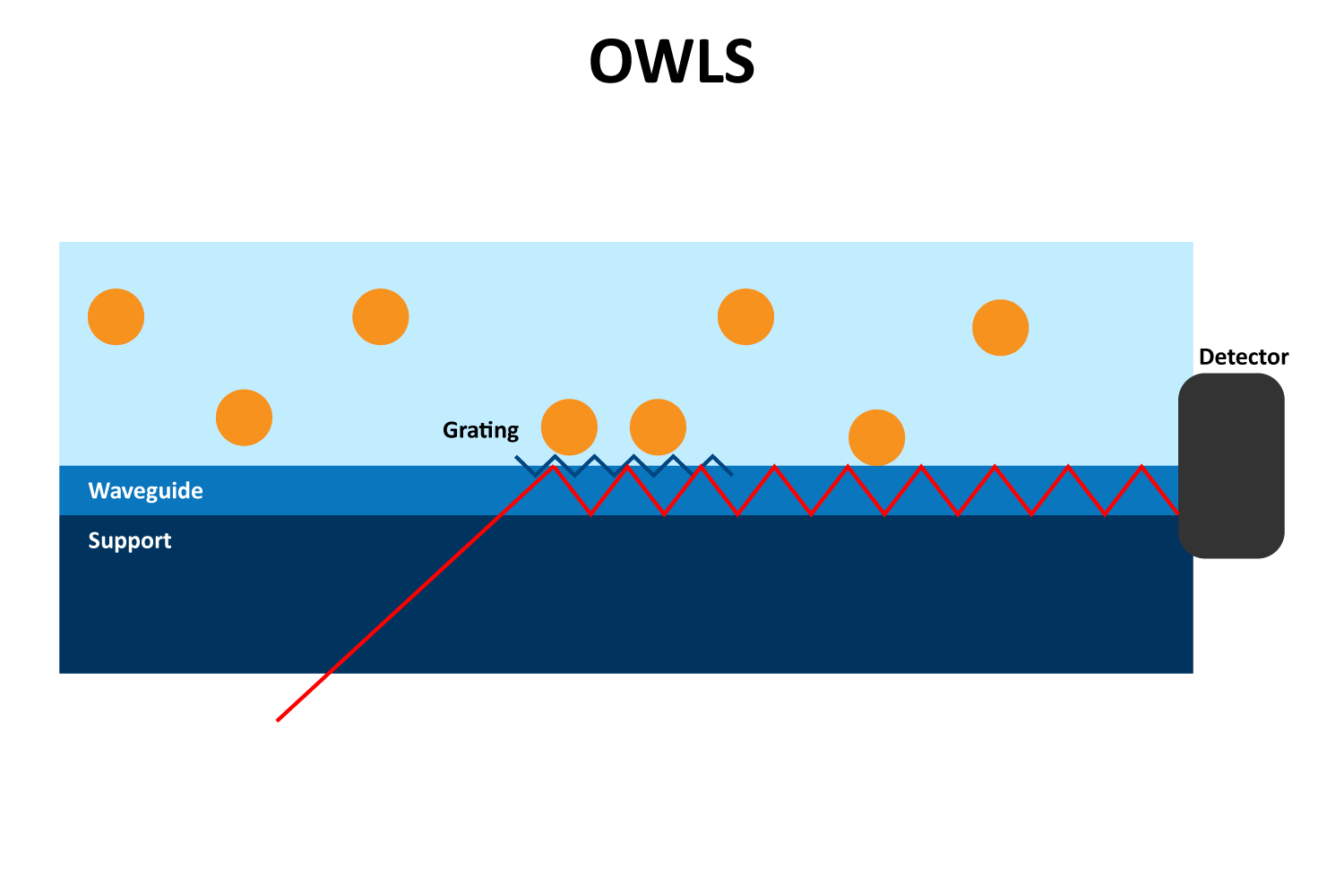
OWLS is a label-free technique that provides real-time data on surface processes, such as adsorption and desorption, allowing for the analysis of dynamic interactions. It is sensitive to small changes in mass and refractive index, making it suitable for detecting thin layers and low concentrations of adsorbed materials.
However, interpreting the data can be complex and often requires detailed modeling to correlate the optical signals with physical properties of the adsorbed layer. The waveguide surface must be carefully prepared to ensure uniformity and reproducibility of measurements. Environmental factors such as temperature and refractive index changes in the surrounding medium can affect the measurements and must be controlled.
| Mass change | Real time | Label free | Liquid | Viscoelastic properties | Limitation | |||||
| QCM-D | Frequency and Dissipation | Data interpretation difficult with thick and highly viscous layers | ||||||||
| SPR | Refractive index | Need optical clear media | ||||||||
| Ellipsometry | Polarization | Compromised if material strongly absorbs light | ||||||||
| Bio-Layer Interferometry | Interference | Less sensitive to small molecules | ||||||||
| OWLS | Refractive index | Environmental factors affect measurements | ||||||||
Conclusion
Each technique has unique strengths and limitations, making them suitable for different applications. The choice of technique depends on the specific requirements of the study, such as the need for mass sensitivity, viscoelastic property measurement, kinetic analysis, or surface characterization. In many cases, combining these techniques can provide complementary data, leading to a more comprehensive understanding of the systems under investigation.
References
- Migoń, D.; Wasilewski, T.; Suchy, D. Application of QCM in Peptide and Protein-Based Drug product development. Molecules 2020, 25 (17), 3950. https://doi.org/10.3390/molecules25173950. ↩︎
- Karlsson, R. SPR for molecular interaction analysis: a review of emerging application areas. Journal of Molecular Recognition 2004, 17 (3), 151–161. https://doi.org/10.1002/jmr.660. ↩︎
- Politano, G. G.; Versace, C. Spectroscopic Ellipsometry: Advancements, applications and future prospects in optical characterization. Spectroscopy Journal 2023, 1 (3), 163–181. https://doi.org/10.3390/spectroscj1030014. ↩︎
- Jug, A.; Bratkovič, T.; Ilaš, J. Biolayer interferometry and its applications in drug discovery and development. TrAC Trends in Analytical Chemistry 2024, 176, 117741. https://doi.org/10.1016/j.trac.2024.117741. ↩︎
- Washburn, A. L.; Bailey, R. C. Photonics-on-a-chip: recent advances in integrated waveguides as enabling detection elements for real-world, lab-on-a-chip biosensing applications. The Analyst 2010, 136 (2), 227–236. https://doi.org/10.1039/c0an00449a. ↩︎

